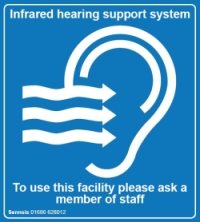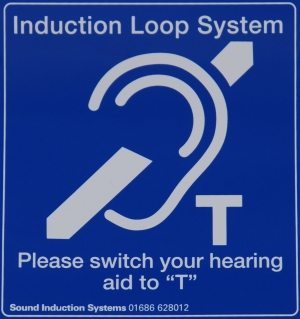What is an induction loop?
An induction loop is a cable that encloses the audience area. It is connected to a loop amplifier that gets its signal from a microphone placed in front of the person speaking or via a direct connection from a sound system, or other sound source. The resulting electric current in the loop produces a magnetic field corresponding to the speaker’s voice. Anyone within the area of the loop who is wearing a hearing aid switched to the ‘T’ setting, or a loop listening aid, can pick up this field. Users may need to adjust their own hearing aids for volume.
The loop wire usually runs around the edges of a room so that it serves the entire audience area. Sometimes, however, it only encloses a particular seating area. It can also be routed over doors and arches. This doesn’t affect how the loop works.
Loops consist of ordinary insulated cable, but the gauge must be chosen with care. The cable is normally run around the edges of the room – usually a single turn is used, but some systems may need two or more turns of cable to generate sufficient magnetic field or to match the amplifier’s characteristics.


